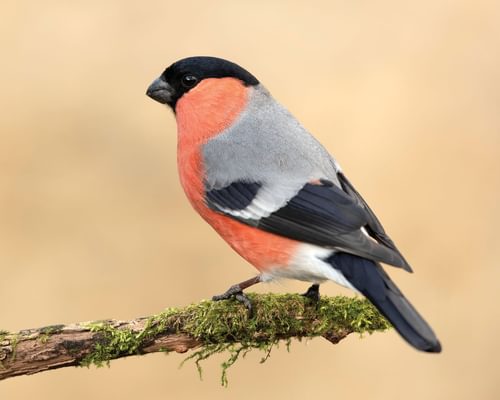With beautifully pink underwear and a lovely black face, bullfinches, also known as Eurasian bullfinches (Pyrrhula pyrrhula) are some of the cutest characters in our gardens throughout the year in the UK and Europe. Since 1967, the bullfinch population in the UK has decreased by 36%, though. So, locating bullfinches and attracting them into your garden may not be as easy as it once was. Still, to attract these beautiful birds into your garden, it helps to know what they eat, so let’s find out.
Bullfinches naturally eat tree buds. They particularly enjoy the buds from fruit trees. They also eat tree shoots and flowers during the spring, with seeds becoming more common in their diets in summer to winter.
So, you may think you need to have trees in your garden to attract bullfinches? While this can aid in your chances, as we’ll see, bullfinches are not as picky as they may seem.
While bullfinches love tree buds, and these make up a lot of their diet, they are quite happy to eat berries and seeds, even insects, at some times of the year. So, bullfinches will eat nearly anything. The key with bullfinches is to offer the food in the right way.
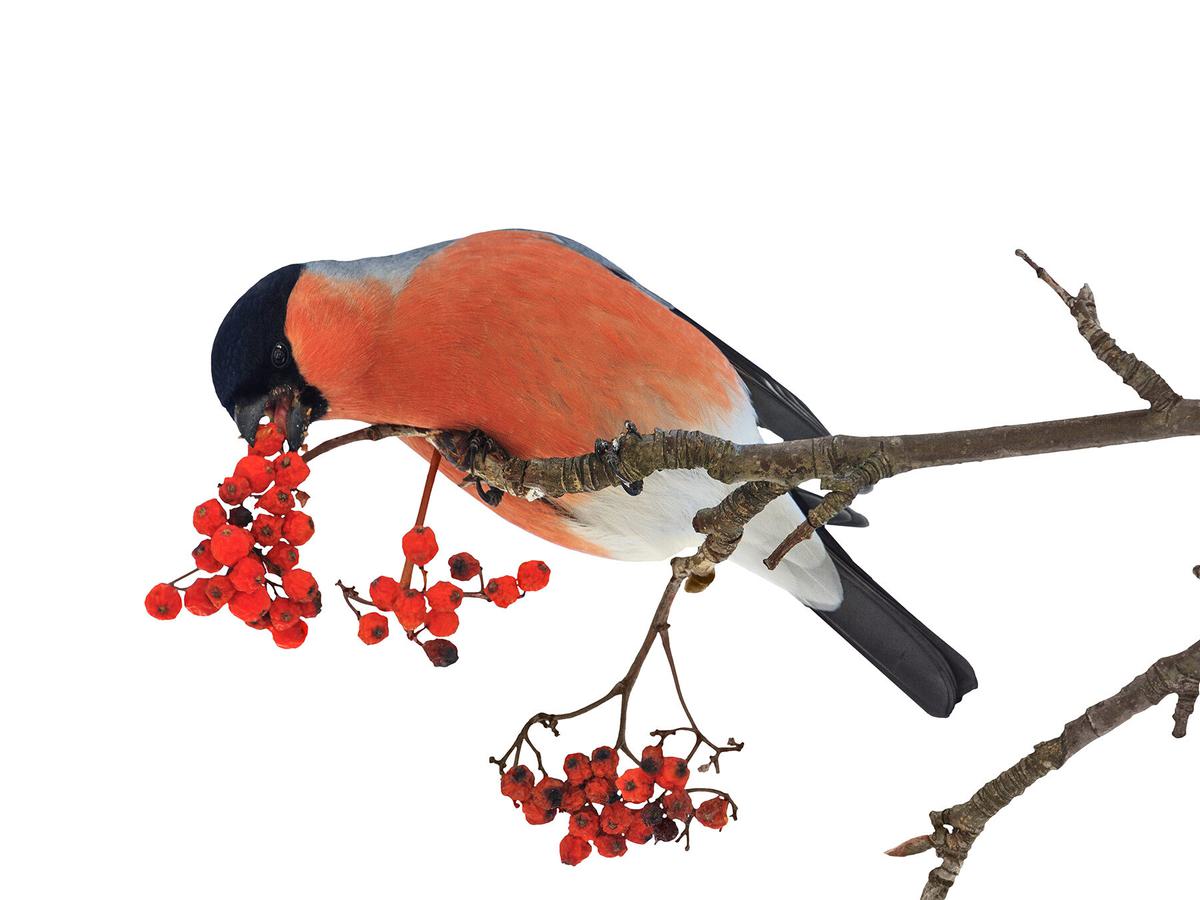
Common Bullfinch, or Eurasian Bullfinch, eating red berries from a tree
What do bullfinches eat in the garden?
You may see a lot of bullfinches in your garden during the summer, autumn and winter months, snacking on seeds. This is when they eat seeds naturally. You may also see them happily tucking in over the spring, but they may leave your garden to find tree buds in these months. Bullfinches will happily eat most seeds in a feeder, but the feeder must be set up correctly.
Bullfinches love a hanging seed feeder. As they eat a lot of tree buds, they feel safest while eating perched on a branch, so you need to recreate this in your garden. They do also love fat balls and suet, though. Again, these should be hung.
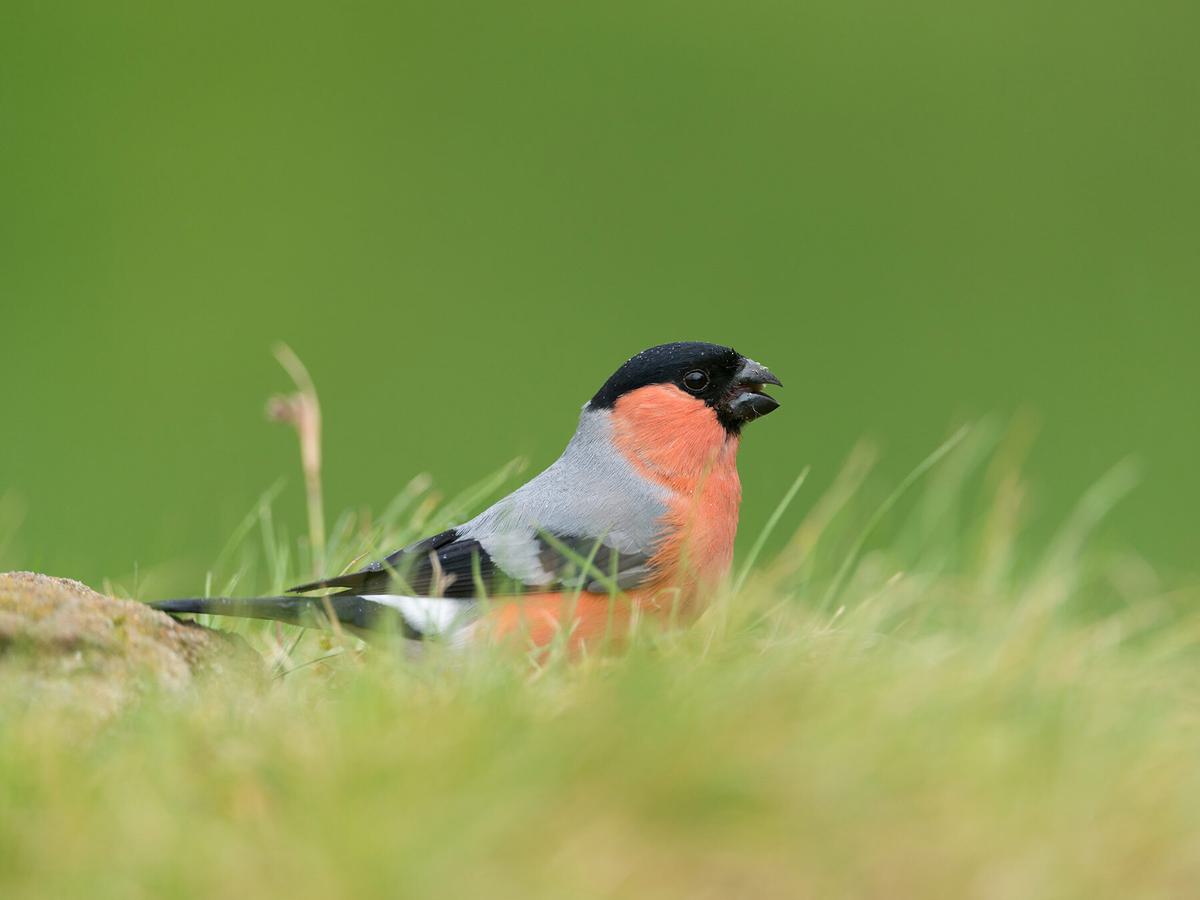
Bullfinch foraging on the ground for food
What do bullfinches eat in the winter?
Bullfinches almost exclusively rely on seeds in the winter. They begin with nettle, rowan and birch seeds and later move on to bramble, nettle, dock and ash seeds.
Bullfinches are expert seed hunters and easily track down seeds in the wild. This is why it's taken bullfinches so long to start visiting our gardens. They simply have all the seeds they need in the wild. We believe it was sunflower seeds in the garden that first attracted them. Still, they are partial to pretty much every seed in a good quality bird feeder mix.
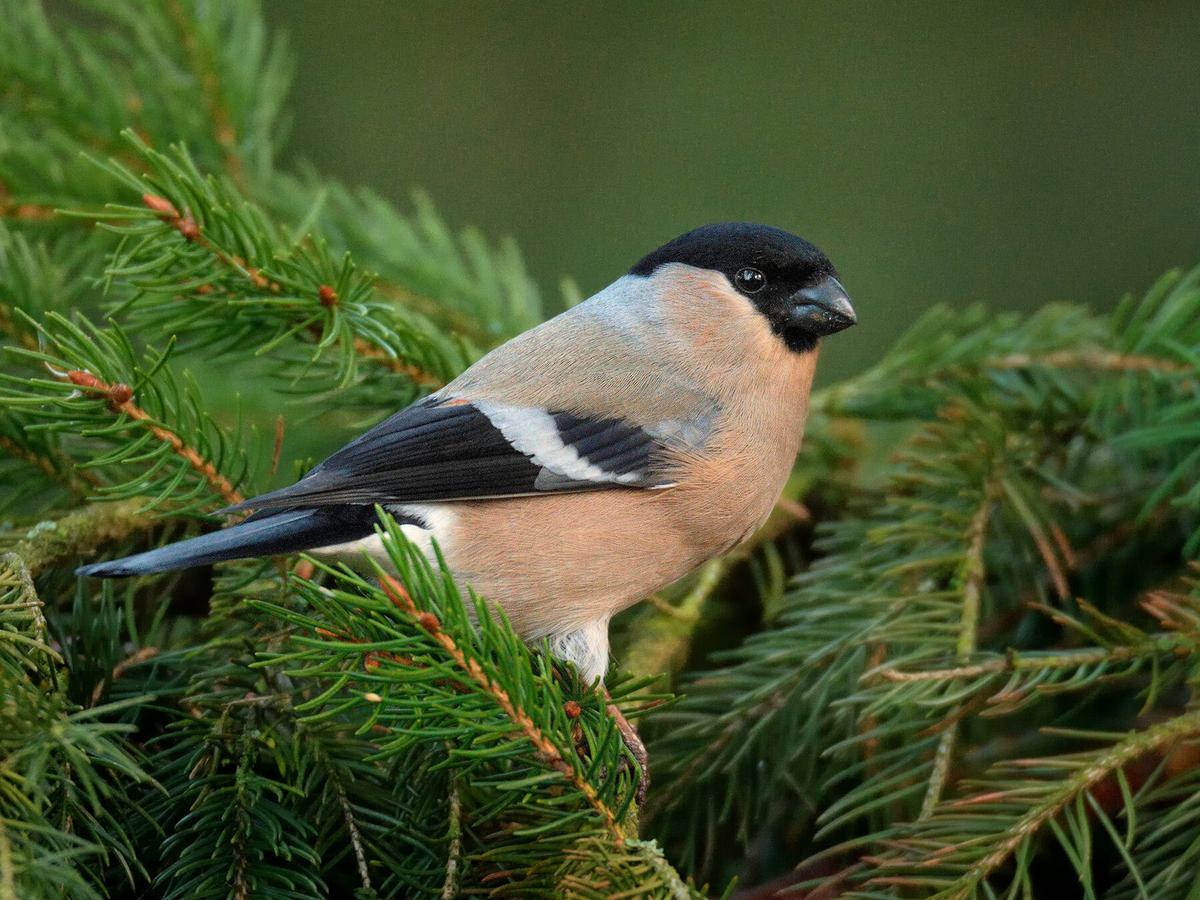
Female Bullfinch perched in the top of a spruce
What food attracts bullfinches?
The best food to leave in your garden to attract bullfinches is seeds. A good quality seed mix is all you need, but there are bullfinch seed mixes available if you really want to concentrate on attracting them. They have many of the seeds that attract bullfinches in the wild and a few other common seeds that other bird species love as well.
If there are bullfinches in your neighbourhood, they will respond well to just about any seed mix. However, you need to offer it to them correctly. You should use hanging feeders to offer it to the birds. Bullfinches spend most of their time in trees snacking on tree buds. So, they are very used to perching on branches. While you may see a bullfinch or two at a bird table, they respond much better to hanging feeders.
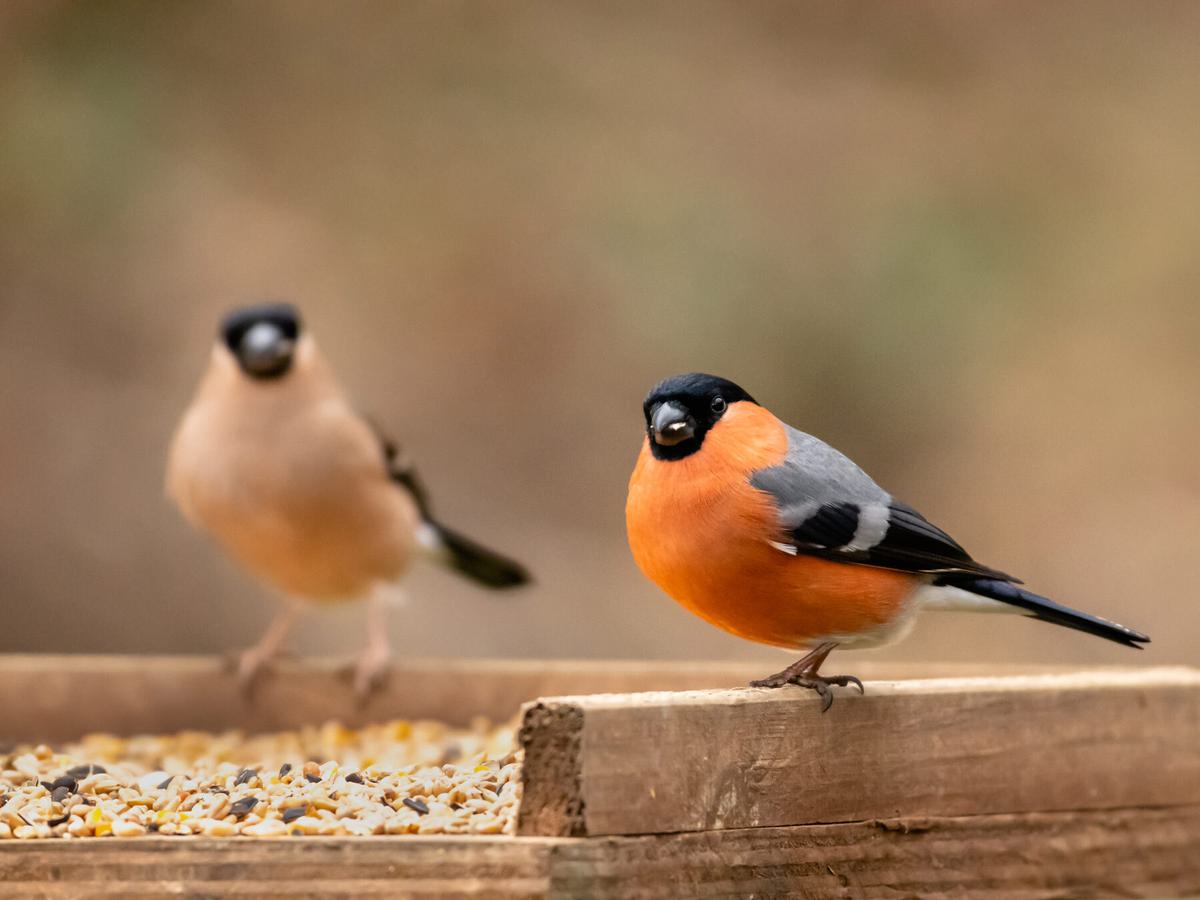
A pair of male (right) and female (left) bullfinches at a feeder, eating seeds
Do bullfinches come to feeders?
Bullfinches are experts in finding food in the wild. They change their diet throughout the year to ensure they always have something to eat. And they usually have an abundance of natural food to enjoy. This makes them very difficult to attract to bird feeders. They simply don’t rely on feeders as much as other birds.
That isn’t to say that bullfinches won’t come to feeders; they certainly will. There are bullfinch seed mixes available from plenty of places if you want to try and attract these beautiful birds into your garden. However, these mixes contain seeds that every bird enjoys. So, you’ll likely see a wide variety of birds, and we hope you see a bullfinch or two!
What do baby bullfinches eat?
During the months of May and July, it is baby bullfinch season. This is the only time the adult bullfinches steer away from their veggie ways and start catching insects. The babies need a lot of strength quickly, so insects are the best thing to feed them.
Once a baby bullfinch flies the nest (about 12-16 days after they hatch), they will start to eat seeds almost straight away. The appetite of a bullfinch is extremely impressive. In fact, in the 1950s, right up until the 1970s, when their numbers started to decline, bullfinches were known as garden gangsters! They can eat 30 tree buds a minute! So, if you have thousands of bullfinches doing this in a woodland, you’d have a very naked and embarrassed woodland on your hands!

Eurasian Bullfinch perched on a branch
What do bullfinches drink?
Bullfinches, like most birds, don’t need to drink too much water. Birds don’t sweat, so they don’t need as much water as us mere mortals. They also get a lot of water from tree buds and shoots. However, if they do need a drink, they have a bit of water; they aren’t a rosé kind of a bird.
Interestingly, though, bullfinches really aren’t keen on large open water, or fast running water. So, while they are very difficult to attract into a garden with food, a birdbath might just do it. A birdbath near a dense hedge that offers protection could bring some bullfinches into your garden for a wash.

Three male bullfinches at a feeder
What eats bullfinches?
Pretty much the only predator for bullfinches is sparrowhawks in the UK.
Some claim that magpies may prey on bullfinches, but we think they are too busy getting saluted at for this sort of behaviour.
There is a range of predators that could take their eggs, though. Bullfinches nest about 4-7 feet off of the ground. So, they can be attacked from both the ground and the air. Pretty much any predator could reach their nests and get their eggs and young.

